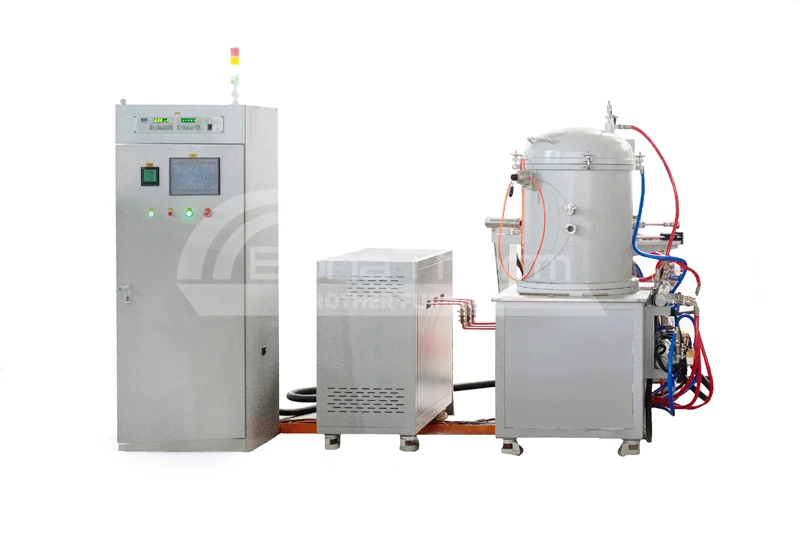seo@bonaregroup.com
Email Us

The vacuum graphite carbon tube furnace is a cyclic operation type, using graphite tubes as heating elements. It is suitable for sintering metal materials and inorganic metal materials under vacuum or protective atmosphere. It can also be used for the sintering and purification of optical materials.
Starting from the internal structure, we show you the unique design logic of vacuum graphite carbon tube furnace products:

Using graphite as heating element.
The inner layer of the chamber shell is polished stainless steel and the outer layer is carbon steel.

Tungsten-rhenium thermocouple and infrared thermometer are used to measure temperature.
Tungsten-rhenium thermocouple can be automatically inserted and removed.

An observation window is provided on the chamber shell to facilitate observation of the heating conditions inside the chamber. The advanced front and rear door design makes it easy for customers to load and unload workpieces.

PLC automatic control system, the human-machine interface adopts high-definition touch screen, and has a built-in operating system developed by us.
Focusing on actual scene applications, we will highlight the advantages of vacuum graphite carbon tube furnace equipment functions for you:
2400℃
1800℃
Upper limit alarm, deviation alarm, automatic stop at the end of program operation, no need for human supervision.
Vacuum graphite carbon tube furnaces can cover multiple fields and demonstrate their cross-industry adaptability and practical value:








Aiming at the characteristics of various materials, the core advantage of the product is its compatible processing:











Comparison of the differences between vacuum graphite furnace and vacuum graphite carbon tube furnace
A:Both use graphite as the heating element, but Vacuum Graphite Furnace use graphite rods/plates for heating, while vacuum graphite carbon tube furnaces use tubular graphite (graphite carbon tubes) for heating, resulting in a more concentrated heat field.
A:Vacuum graphite products have a wide temperature range and a large chamber volume, making them suitable for large workpieces. Graphite carbon tube products have a concentrated temperature within the carbon tubes, making them suitable for small, precision parts.
A:Graphite furnaces are suitable for large-volume processing of large materials (such as ceramic sintering). Graphite carbon tube furnaces are suitable for small-volume, high-precision processing (such as inorganic non-metallicmaterials).
Present performance details with accurate data,intuitively showing the core technical specifications of the vacuum graphite carbon tube furnace:
| Types | Working area size (Diameter x Height)mm |
Working Temperature(℃) | Power(KW) | Power Supply(V) | Ultimate Vacuum Degree(Pa) |
|---|---|---|---|---|---|
| BR-18STV-40 | Φ160X160 | 1800 | 35 | 380 | 6.67x10-3 |
| BR-18STV-50 | Φ200X300 | 1800 | 60 | 380 | 6.67x10-3 |
| BR-22STV-40 | Φ160X160 | 2200 | 50 | 380 | 6.67x10-3 |
| BR-22STV-50 | Φ200X300 | 2200 | 90 | 380 | 6.67x10-3 |
Control of all links from raw materials to finished products:
Stainless steel sheets and high-temperature-resistant alloys are selected, meeting vacuum sealing and load-bearing standards.
Cut raw materials according to design drawings using specialized equipment to ensure dimensional tolerances.
Bends and forms the sheet metal, processing the furnace shell and chamber components with a bending angle accuracy of ±1°.
Lathes are used to process precision components such as flanges and connectors, ensuring surface roughness control.
Weld the furnace body welds, ensuring airtightness on key components, and perform post-weld inspection.
Grinds and trims welded components to ensure a smooth appearance without sharp edges.
Electrostatically sprays the furnace shell and dries it.
Install the vacuum system, heating element, temperature control module, cooling system, and tighten connectors.
Conduct vacuum tests, temperature rise tests, and safety checks.
Internally cushioned with pearl cotton, externally covered with waterproof film and wooden crates, with anti-collision markings and equipment parameter labels.